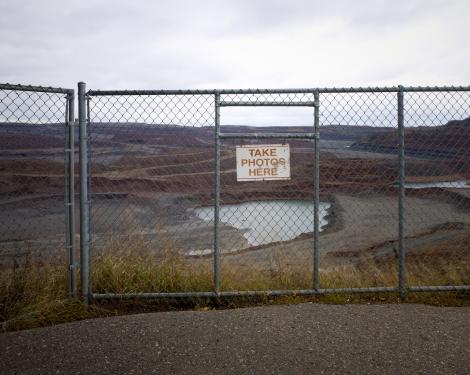
Matt Doll, Minnesota Environmental Partnership
The NorthMet copper-nickel mining project (formerly PolyMet) proposed near Babbitt and Hoyt Lakes hasn’t exactly met with success in the past few years. NorthMet’s state pollution permits have been rejected or suspended in the courts. Its federal wetlands destruction permit was overturned by the Army Corps of Engineers because it would violate water quality regulations of the Fond du Lac Band of Lake Superior Chippewa.
This environmentally destructive sulfide mine, once viewed by some as inevitable, is further away from breaking ground than it was when its permits were originally granted in 2018. Now NewRange, the holding company backed by mining giants Glencore and Teck Resources, is going back to the drawing board on its plans for NorthMet in the hopes of securing new permits.
NewRange says it is examining the way it could treat NorthMet’s wastewater and mining waste to “enhance environmental safeguards and mining performance,” though it simultaneously refuses to concede that anything might be wrong with its current plans.
While the company made no mention of its various permit reversals in its press release, it’s clear that these “sustainability studies” are a response to the successful efforts by tribal and environmental advocates to block the polluting project. They amount to something of a magic trick by NewRange to attempt to paint their mine, which has a deservedly dirty reputation in Minnesota, as a victory for climate and environment. The mine’s backers have long greenwashed its projected production of copper and nickel as necessary for the clean energy transition.
Notably, NewRange stated that its studies are reconsidering the design of its tailings dam, the intended storage site for its toxic waste. That waste is among the greatest risk factors in the project, as a spill would spread highly destructive sulfuric acid into the St. Louis River and Lake Superior watershed.
From what we’ve seen, NewRange’s “magic trick” is just that – a trick. Sulfide ore mining has never been conducted in the water-rich ecosystems of Minnesota, and it has never been carried out anywhere else without pollution of the surrounding environment.
Even if NewRange’s claims about its “studies” were true, there are several glaring problems:
- The mine will directly destroy hundreds of acres of wetlands and drain thousands more. Minnesota’s wetlands are among our greatest climate action assets, holding in vast stores of carbon from the atmosphere. These wetlands can’t be simply replaced one-for-one somewhere else without extremely harmful impacts on climate and ecology.
- Sulfide mining operations are temporary, waste storage is forever. Even if the NorthMet mine alters its proposed tailings dam, Minnesota will still have to maintain it for decades – even centuries – in the future to prevent a catastrophic spill. We cannot assume that NewRange or its backers will stick around to help pay the bill. If a spill does occur – an event made more likely by climate change-influenced weather patterns – the result would be catastrophic for the St. Louis River watershed at the headwaters of Lake Superior.
- NewRange has no financial interest in protecting Minnesota’s waters. There’s no reason to think that the company is studying new possible measures due to genuine interest in sustainability. Like its fellow sulfide-mining venture Twin Metals in the Boundary Waters watershed, NewRange is signaling to its political and financial backers that its toxic mining project isn’t quite dead. If a new state or federal administration friendlier to mining companies came into office, or if harmful new precedents on tribal water rights were set by a federal court, NorthMet could regain its momentum and put its “sustainability” measures back on the shelf.
Meanwhile, NorthMet will continue making the case that its mine is needed for the clean energy transition, though that case doesn’t hold water. Even if the world were short on copper and nickel (for the record, there is currently a glut of nickel that is sharply decreasing its global prices), we could acquire far more metal at a much reduced environmental and economic cost by increasing our pitifully low recycling rates. Sacrificing Minnesota’s water, wetlands, and communities is not worth the relatively minor amount of ore extracted from our land.
Ultimately, NewRange’s new trick isn’t likely to give them much headway, but we can’t let down our guard. Laws, rules, and regulators can change, and mining conglomerates’ interest in northern Minnesota isn’t going away. Neither are the MEP members and allies dedicated to protecting our people and planet.